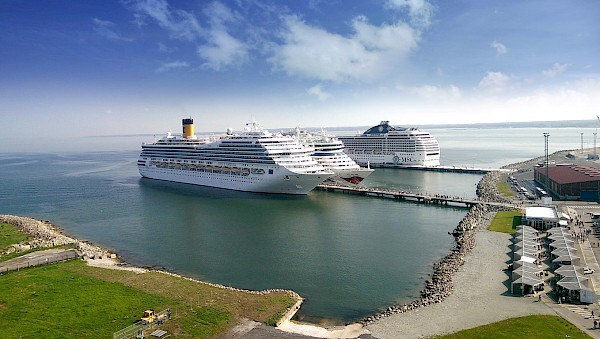Thursday, July 28, 2016 - 15:06 by ce-press
On May 2, local heat provider Tallinna Kute began renovating the heating pipeline on Sadama Street. At the same time TS Energia, a Port of Tallinn subsidiary, will start connecting the Old City Harbour’s sewage pipeline with the city’s sewerage in order to guarantee the required volume of wastewater admittance from ships at all berths in active use.
For this purpose a deep sewage micro-tunnel will be built, which involves digging up several streets on harbour territory causing temporary traffic diversions. Until now ships have been able to discharge 7m3 of sewage which has been sufficient because ships sailing in the Baltic Sea have been allowed to discharge comminuted and disinfected sewage at a distance of 4nm and untreated sewage at a distance of 12nm from the nearest land.
On 22 of April 2016, however, the Marine Environment Protection Committee of the International Maritime Organization (IMO) concluded, at its 69th session,that passenger ship sewage discharges into the Baltic Sea will be banned from 2021.
The decision will make the Baltic Sea the first region in the world where sewage from passenger ships must be discharged at port reception facilities, or treated with an onboard treatment plant certified as meeting stringent special area requirements. For new ships built from 2019 onwards, these requirements will apply earlier. However, in certain cases of direct passages between the St Petersburg area and the North Sea, there is a two-year extension to the deadline until 2023.
The main objective of the micro tunnel is to increase the reception capacity of sewage from 100mᵌ to 1,000mᵌ per hour. When all construction work is finished, the Old City Harbour will be provided with a sewerage network which meets the IMO requirements.
Port of Tallinn has requested and received EU co-financing for the project from the development of the Helsinki-Tallinn maritime link projects: Twin-Port I and Twin- Port II.
Also being improved is traffic flow with the reconstruction of Logi Street enabling the implementation of traffic flow management system, Smart Port, that will rearrange the traffic in the A-terminal area. The Smart Port project also brings construction works in the A-terminal and neighbouring cruise area as new gates for cruise passengers, cars and trucks are being built. The works are seen as being essential to improve the traffic of Estonia’s main tourist gateway to be more logical and to make the harbour area more attractive.
The multi-stage works are due for completion by the end of this year.
